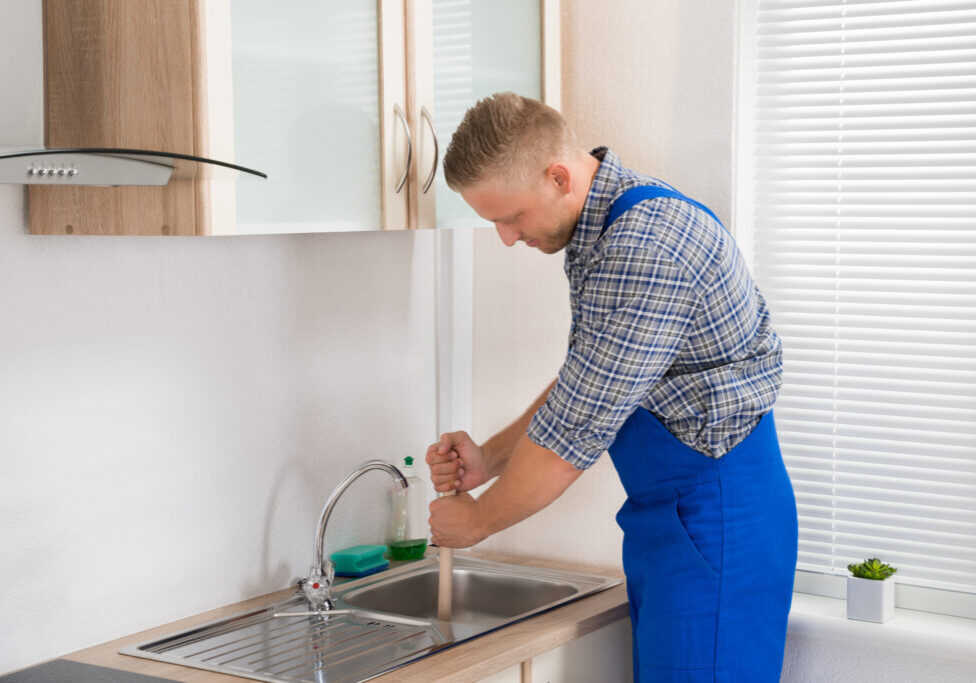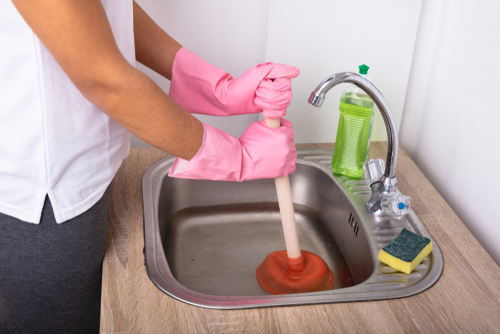What're your opinions concerning A Guide to Plungers (and How to Use Them)?

Intro
Appropriate maintenance of household drains is essential for protecting against clogs and guaranteeing smooth water flow. One of the key tools in every property owner's toolkit is the plunger, along with various drainpipe cleaners developed to tackle stubborn clogs properly. This short article explores just how to utilize bettors and drainpipe cleaners efficiently to keep your drains flowing openly.
Area 1: Understanding Bettors
Sorts of Plungers
There are several kinds of plungers readily available, each created for various types of drains and blocks. The most usual types consist of cup bettors, flange plungers, and accordion bettors.
Exactly How Plungers Job
Plungers service the principle of developing stress and suction to dislodge blockages. When correctly used over a drain, they create a vacuum cleaner that can take out particles or break up obstructions.
Selecting the Right Plunger
Selecting the right bettor depends on the type of drainpipe and the nature of the clog. Mug plungers are ideal for sinks and tubs, while flange bettors are better fit for toilets as a result of their design.
Typical Mistakes with Bettors
Preventing these blunders makes sure effective plunging: incorrect seal around the drainpipe, not enough pressure, and unclear bordering particles.
Section 2: Using Plungers Properly
Prep work
Prior to diving, guarantee the plunger covers the drain totally and develops a limited seal. Clear any type of visible debris around the drain opening.
Strategy
Begin with gentle plunging activities to develop suction. Increase stress slowly, using a steady rhythm. Repeat as essential up until the drainpipe removes.
Troubleshooting Tips
If diving doesn't function, try changing the seal, applying oil jelly for a better seal, or utilizing a various kind of bettor.
Section 3: Comprehending Drainpipe Cleaners
Kinds Of Drainpipe Cleaners
Drain cleansers can be chemical or chemical. Chemical cleaners utilize strong chemicals to liquify obstructions, while chemical cleaners make use of all-natural enzymes to break down organic matter.
Just How Drain Cleansers Work
Chemical cleaners react with blockages to liquify them, while enzymatic cleaners break down natural materials like hair and oil without harming pipelines.
Safety Factors to consider
Always put on handwear covers and eye security when using chemical drainpipe cleansers. Ensure ample air flow and comply with maker directions very carefully.
Eco-Friendly Alternatives
Think about using vinegar and cooking soft drink or enzyme-based cleaners for eco-friendly alternatives that are much safer for pipelines and the atmosphere.
Section 4: Utilizing Drain Cleansers Effectively
Application Strategies
Pour chemical cleansers straight into the drainpipe opening. Allow them to help the advised time before flushing with warm water. Enzymatic cleaners must rest overnight.
Safety measures
Stay clear of blending different kinds of cleansers, as this can generate toxic fumes. Never utilize chemical cleansers combined with a plunger, as splashing can take place.
Handling Persistent Obstructions
For persistent blockages, take into consideration using a plumbing snake or calling an expert plumber to stop damage to pipelines.
Conclusion
Finally, understanding just how to use plungers and drain cleaners successfully is crucial for maintaining healthy plumbing systems. By selecting the right tools and methods, home owners can take on small obstructions and avoid major pipes problems down the line.
How to Use a Plunger to Unclog a Drain
The humble plunger is a simple yet effective tool for breaking clogs in sinks, tubs and toilets. This handy tool is easy to use. You can make the most of its power if you understand how it works. Ready to dive in? Here’s what you need to know.
Safety First!
Never use a plunger with drain chemicals. Water will splash as you work, and the chemicals can spatter, burning skin and eyes. It’s a good idea to use rubber gloves and wear safety goggles when you work on a clog.
Choose the Right Tool for the Job
Plungers come in two different styles. Sinks, bathtubs and showers require a cup plunger. Like its name suggests, the rubber end is shaped like a cup. Use a flange plunger on toilets. These plungers have a rubber funnel extending from the cup. A plunger needs to be big enough to cover the drain.
Ready, Set, Plunge!
Coat the rim: Coat the plunger rim with petroleum jelly. This helps make a better seal.
Block outlets: Hold a wet rag over nearby outlets such as the overflow vent or the drain in a second sink.
Release air: Insert the plunger at an angle into the water. Water will displace air in the cup. A water-filled cup is more forceful than one filled with air.
Keep the plunger upright: Hold the plunger perpendicular to the drain. Use fast, forceful strokes, but make the first stroke gentle. The first stroke can create a splash if the cup still contains air. Thrust the plunger 15 to 20 times.
Snap off the plunger: The final stroke should be a strong upward motion that ends when the plunger snaps off the drain.
Repeat the process: you may need to repeat this sequence several times. When the water drains away, your work is done. High-five! https://plumbernw.com/blog/how-to-use-a-plunger-to-unclog-a-drain/

Application Strategies
Pour chemical cleansers straight into the drainpipe opening. Allow them to help the advised time before flushing with warm water. Enzymatic cleaners must rest overnight.
Safety measures
Stay clear of blending different kinds of cleansers, as this can generate toxic fumes. Never utilize chemical cleansers combined with a plunger, as splashing can take place.
Handling Persistent Obstructions
For persistent blockages, take into consideration using a plumbing snake or calling an expert plumber to stop damage to pipelines.
Conclusion
Finally, understanding just how to use plungers and drain cleaners successfully is crucial for maintaining healthy plumbing systems. By selecting the right tools and methods, home owners can take on small obstructions and avoid major pipes problems down the line.
How to Use a Plunger to Unclog a Drain
The humble plunger is a simple yet effective tool for breaking clogs in sinks, tubs and toilets. This handy tool is easy to use. You can make the most of its power if you understand how it works. Ready to dive in? Here’s what you need to know.
Safety First!
Never use a plunger with drain chemicals. Water will splash as you work, and the chemicals can spatter, burning skin and eyes. It’s a good idea to use rubber gloves and wear safety goggles when you work on a clog.
Choose the Right Tool for the Job
Plungers come in two different styles. Sinks, bathtubs and showers require a cup plunger. Like its name suggests, the rubber end is shaped like a cup. Use a flange plunger on toilets. These plungers have a rubber funnel extending from the cup. A plunger needs to be big enough to cover the drain.
Ready, Set, Plunge!
Coat the rim: Coat the plunger rim with petroleum jelly. This helps make a better seal. Block outlets: Hold a wet rag over nearby outlets such as the overflow vent or the drain in a second sink. Release air: Insert the plunger at an angle into the water. Water will displace air in the cup. A water-filled cup is more forceful than one filled with air. Keep the plunger upright: Hold the plunger perpendicular to the drain. Use fast, forceful strokes, but make the first stroke gentle. The first stroke can create a splash if the cup still contains air. Thrust the plunger 15 to 20 times. Snap off the plunger: The final stroke should be a strong upward motion that ends when the plunger snaps off the drain. Repeat the process: you may need to repeat this sequence several times. When the water drains away, your work is done. High-five! https://plumbernw.com/blog/how-to-use-a-plunger-to-unclog-a-drain/

I came across that entry on while perusing the search engines. Don't hesitate to set aside a second to distribute this post if you liked it. I recognize the value of your readership.
Additional Information